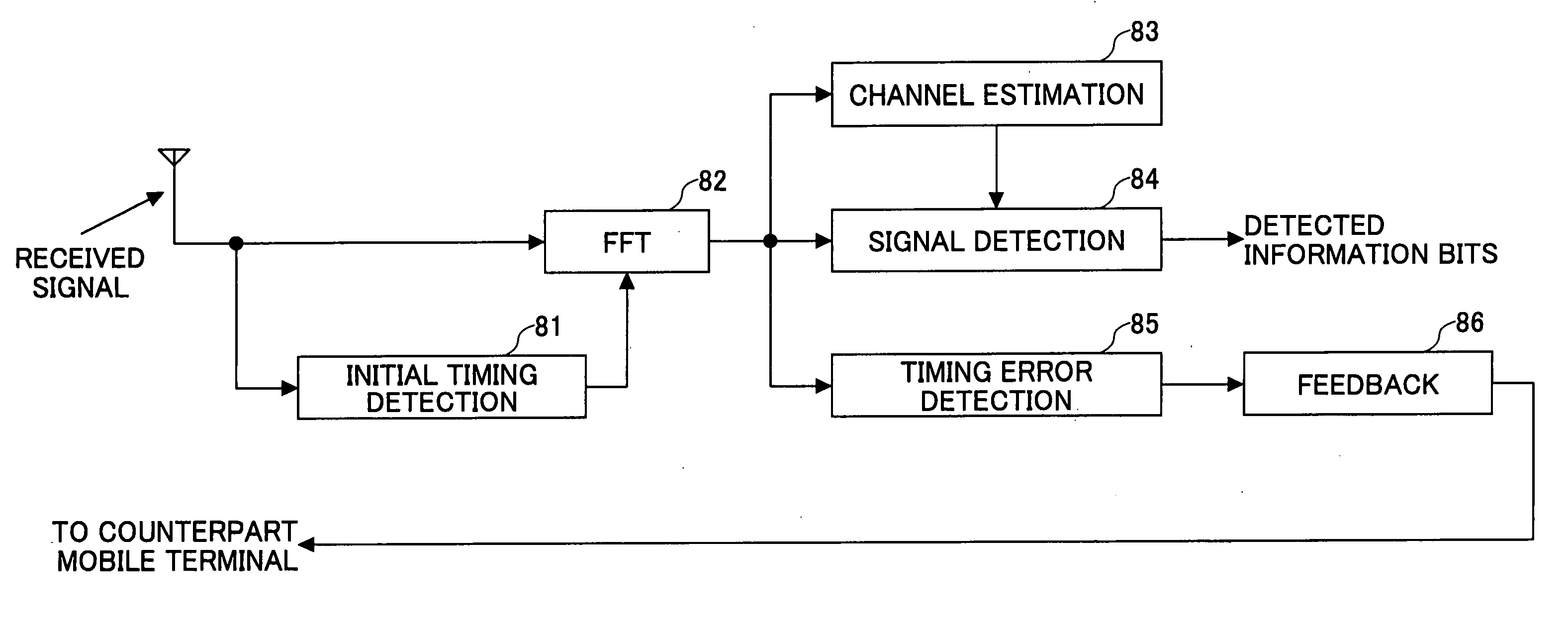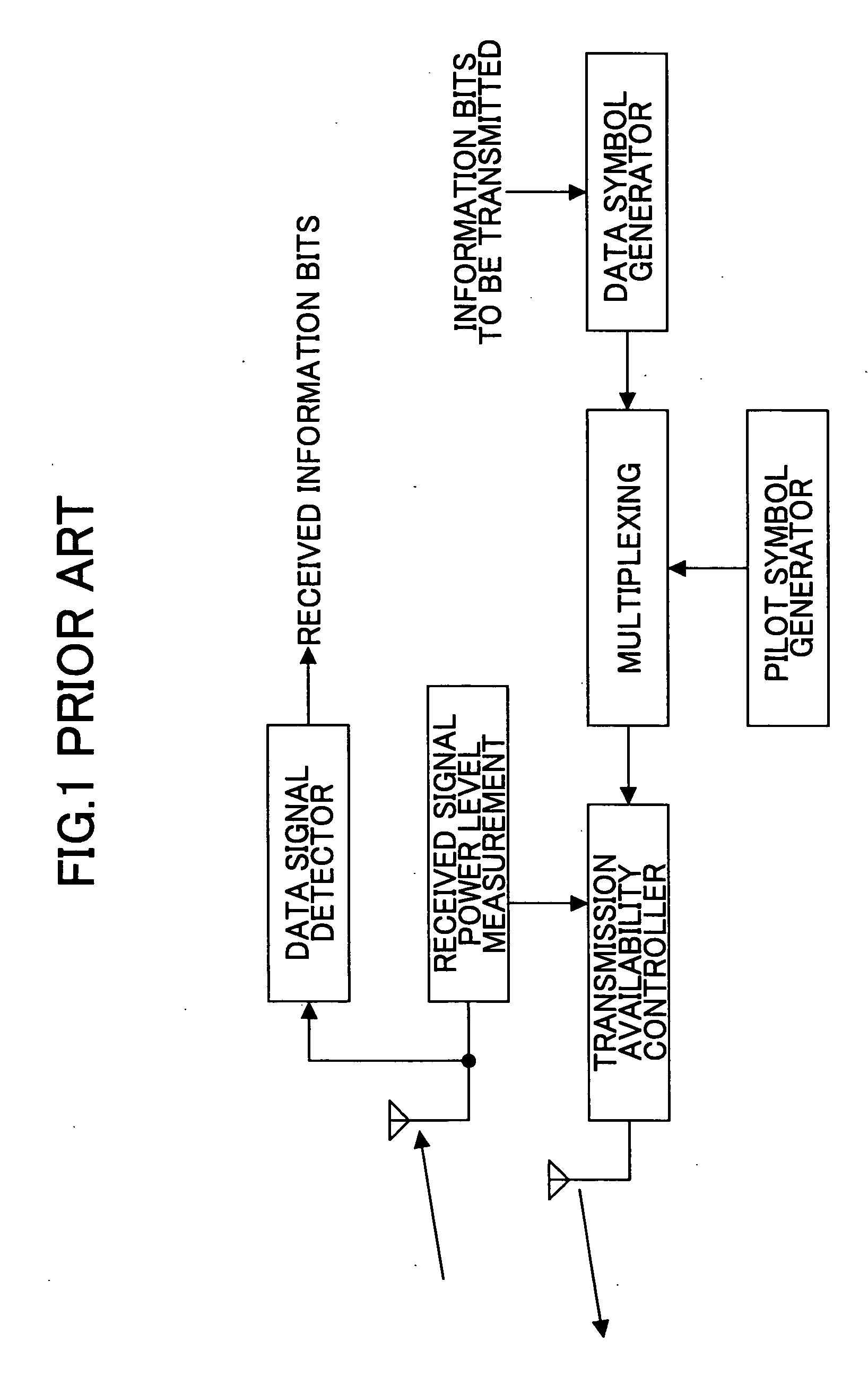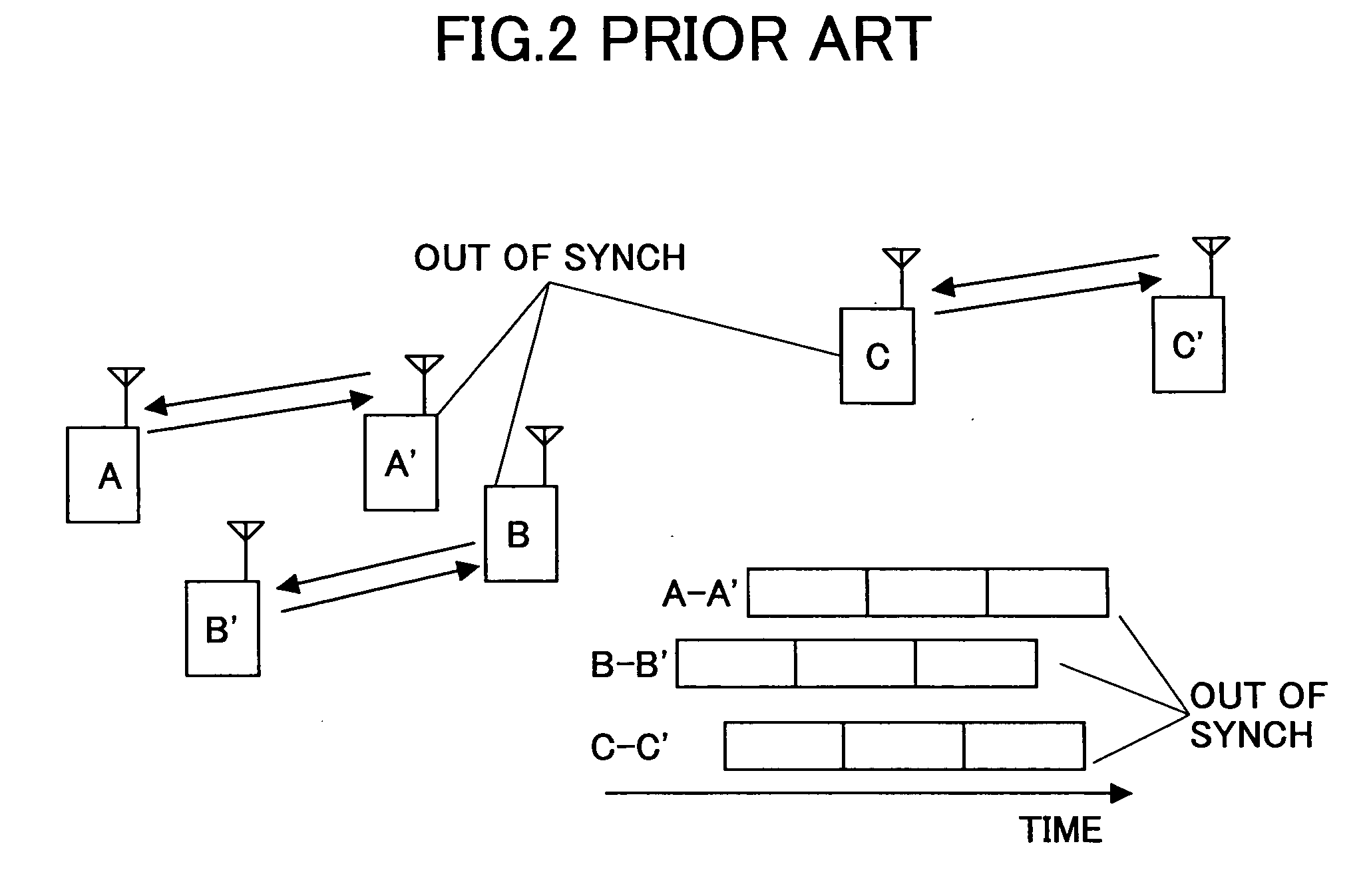Radio receiver and radio signal receiving method
a radio receiver and radio signal technology, applied in the field of wireless communication techniques, can solve the problems of inability to accurately measure the difference between receiving timing and streaming transmission, inability to use gps, and inability to produce inacceptable delays in real-time communication and streaming transmission
- Summary
- Abstract
- Description
- Claims
- Application Information
AI Technical Summary
Benefits of technology
Problems solved by technology
Method used
Image
Examples
fourth embodiment
[0089]FIG. 17 is a schematic block diagram of a timing error detection unit according to the Each of the timing detectors outputs information about receiving timing and information about power level for that receiving timing. These information items are input to the timing error determination unit 146. The power level for the receiving timing of the signal from the adjacent subcarrier block is weighted using an appropriate weighting factor, and the weighted power level is input to the timing error determination unit 146. With this arrangement, a receiving timing difference can be determined more appropriately because the contribution of the undesired signals from the subcarrier blocks other than that of the desired signal is appropriately considered.
[0090]FIG. 18 illustrates another example of resource allocation for pilot symbols where more subcarrier blocks are included in a frequency band. In this case, in addition to the adjacent subcarrier blocks, the contribution of the next ...
embodiment 5
[0101] With this embodiment, as long as a mobile terminal is using successive subcarrier blocks under the situation where multiple subcarrier blocks are available for the user, the number of subcarrier blocks used by each of the mobile terminals can be determined easily, while using pilot symbols illustrated in
[0102] In the previous embodiment, an IFFT unit 234 is used to perform inverse fast Fourier transform collectively on the signals from two subcarrier blocks to determine whether a mobile terminal is using multiple successive subcarrier blocks. In this embodiment, determination of continuity of subcarrier blocks is performed without using IFFT.
[0103]FIG. 25 is a schematic diagram illustrating another example of determination of use of successive subcarrier blocks. This structure includes pilot signal dividing units 252 and 253, an extrapolation unit 254, and a comparison and determination unit 256. The pilot signal dividing units 252 and 253 serve in a manner similar to those ...
eighth embodiment
[0111] As has been described above, if delayed waves reside within the range of the guard interval, intersymbol interference can be reduced efficiently. Accordingly, it is desired from the viewpoint of reliability of information transmission that the guard interval be long. Guard interval is, however, created by copying a portion of the effective symbol section, and therefore, it is undesirable from the viewpoint of information transmission efficiency that the guard interval be long. To deal with this problem, it is proposed to prepare two types of guard intervals with different lengths, and to use the longer one for transmission of pilot symbols, while using the shorter one for transmission of data symbols. If long and short time intervals are used, it is preferred to perform FFT on each of the data symbol set and the pilot symbol set. In this case, an FFT window is provided for each of the FFT operations. FIG. 28 is a block diagram of a receiver with such a structure, and FIG. 29 ...
PUM
 Login to View More
Login to View More Abstract
Description
Claims
Application Information
 Login to View More
Login to View More - R&D
- Intellectual Property
- Life Sciences
- Materials
- Tech Scout
- Unparalleled Data Quality
- Higher Quality Content
- 60% Fewer Hallucinations
Browse by: Latest US Patents, China's latest patents, Technical Efficacy Thesaurus, Application Domain, Technology Topic, Popular Technical Reports.
© 2025 PatSnap. All rights reserved.Legal|Privacy policy|Modern Slavery Act Transparency Statement|Sitemap|About US| Contact US: help@patsnap.com



